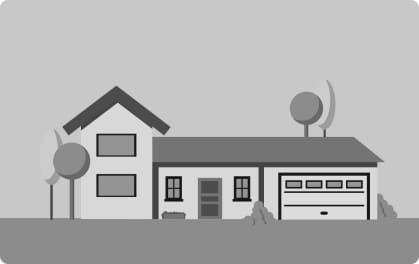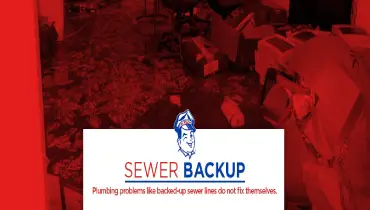
Table of Contents
- What Is a Sewer Backup?
- Early Signs of a Sewer Line Backup
- Indications of an Emergency
- What Causes Sewer Backup?
- Factors You Cannot Control
- Causes You Can Control
- What to Do When Your Sewer Backs Up
- How Our Plumbers Clear Backups
- How to Prevent Sewer Backups
- Correct Drainage Problems
- Prevent Tree Root Problems
Plumbing problems like backed-up sewer lines do not fix themselves. If you have a problem with your home's wastewater line, you need to repair it promptly to prevent the slow flow from completely blocking all drainage from your home. An entirely stopped sewer line can cause wastewater to overflow into your home, creating a health hazard and a cleaning headache. Learn how to prevent this issue, recognize when the problem occurs and what to do if it happens.
The exact solutions will depend on whether your home or business connects to a municipal sewer line or if you have a septic tank. Both options process wastewater, but they use different means of doing so. A backup in either can cause severe contamination of your home by reversing the flow of germ-laden sewage, causing toilets to overflow and sinks to back up.
What Is a Sewer Backup?
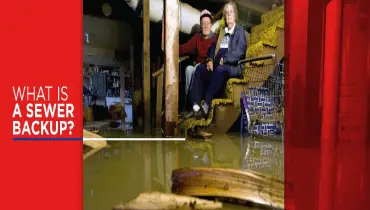
Your home has incoming water lines and outgoing sewer lines. The sewer, or wastewater, lines need to move the used water from your washing machine, tub, shower, toilets and sinks away from your home. When the waste line gets blocked or breached, water will back up into your home. The results of water coming into your home include contamination, mold growth and water damage, to name a few.
Early Signs of a Sewer Line Backup
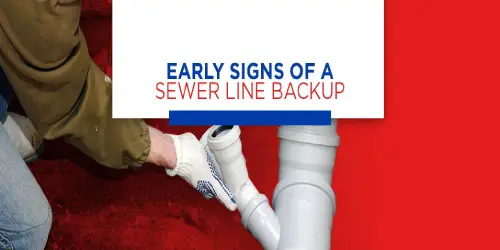
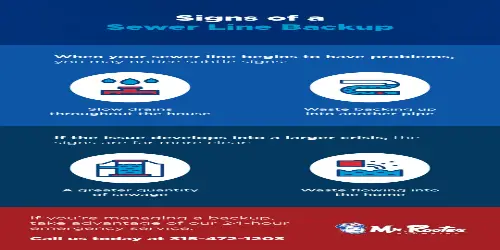
When your sewer line begins to have problems, you may notice subtle signs. While you may find it easy to ignore these early signs of a backup, you should not. Treating the problem early before you have sewage overflowing into your bathroom is your best choice.
Slow drains throughout the entire house are a crucial sign you have a building problem in your sewer line. If only one pipe has a problem, you can typically repair it on your own with a hair remover or a plunger. However, when an issue appears simultaneously in multiple drains, you have a sewer line problem. Another sign of a sewer drain issue happens when waste backs up into another pipe when you flush the toilet or use a washing machine. When waste comes up and overflows drains in your home, you don't have a minor problem. You have a more significant issue.
Indications of an Emergency
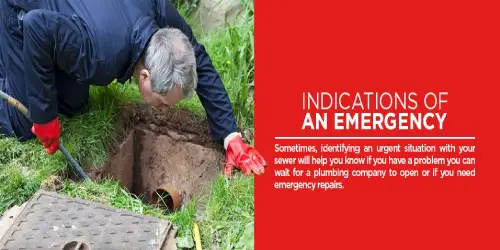
Sometimes, identifying an urgent situation with your sewer will help you know if you have a problem you can wait for a plumbing company to open or if you need emergency repairs. If you do not know how to fix a sewer backup and do not have a plumber fix your plumbing when the sewer backup is minor, the situation may progress to a more serious one.
Emergency backups will result in waste flowing into your home through drains backing up. In some cases, your toilet may back up, sending germ-filled liquid onto the floor of your bathroom. Do not take this situation lightly. Human waste creates a biohazard, and you will need to avoid the area until you can get it thoroughly cleaned and sanitized. You should also prevent everyone in your home from using the plumbing until you can get the drainage system repaired. That's why having an emergency number for an area plumber close by is critical to restoring your home.
What Causes Sewer Backup?
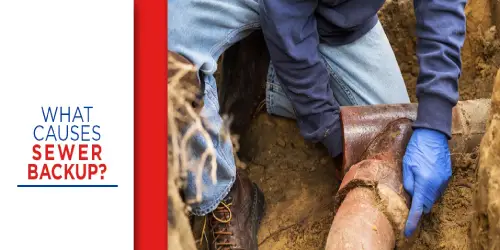
Due to the age of the nation's plumbing system and the increasing number of homes, sewer line backups are rising at 3 percent each year. Several things can cause a sewer backup, many of which you have no control over. If you want to know how to prevent a backup in your waste line, you need to know the causes you can and cannot control.
Factors You Cannot Control
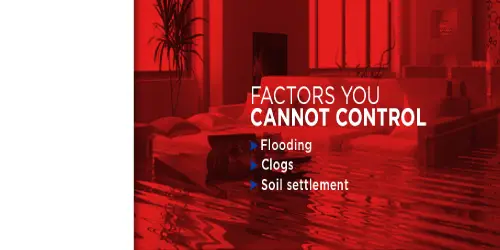
If your drain backs up, it might not be your fault or your problem to fix. Sometimes, the city sanitary sewer clogs or drains slowly, causing water to back up into your home. City lines could fail from a few causes. You can tell the problem comes from the municipal sewer lines if the cleanout near your house is full of water, indicating a drainage problem from your home to the city sewer. An empty cleanout means the drain problem is closer to your home.
- Flooding: Flood waters overwhelming the local sanitary sewage system, if the system merges with stormwater drainage, can reduce the flow rate. Slower drainage can make wastewater back up into your home.
- Clogs: City sewers can clog just as your home lines can, though this occurs more rarely because municipal drainage lines are broader than those for homes. If you suspect a clog, contact the city water department to report the problem.
- Soil settlement: Soil supporting the drainage pipes the city or your home use could wash away from heavy rains. Losing the supporting soil could cause the drain lines to collapse. The breach in the pipe's structure blocks flows to the sanitary sewer line, creating a backup of flow into your home.
While these causes are out of your hands, you will not have any warning when a sewer backup happens for one of these reasons. The bright side of the situation is if the city's sewer is at fault, you won't have to pay to have your plumbing repaired unless other damage occurred to your home plumbing.
Causes You Can Control
Some causes of backup are the fault of your plumbing or the surrounding environment. You have more agency in preventing backups from these causes, but if one of these factors does result in a backup, you will need to call a professional plumber to fix the issue.
- Tree roots: Tree roots can grow into older sewer lines. You can prevent line damage from roots by installing better drain lines outside your home or trimming tree roots.
- Age: As durable as they seem, pipes will not last forever. If you have older sewer lines leading from your home made of clay or cast iron, the age of the pipes makes them more susceptible to breaking through wear over time. This scenario is highly possible, since the average American sewer line is 30 years old.
- Pouring fat, oils and grease down the drain: Fats, oils and greases solidify as they cool, creating large globs that create physical blockages in your drain line. Never pour grease or cooking oil down the drain. Also, do not put anything in your toilet other than toilet tissue and waste. Do not allow paper towels, wet wipes or sanitary napkins to go down the toilet. Even if these products claim to be flushable, they can still clog the system.
- Poor design: A poorly designed home drainage system can lead to more backups. If you have French drains or sump pump discharge, waste from these should not connect to your main sanitary drain line. The accumulated dirt will cause a blockage, which explains the illegality of such connections.
What to Do When Your Sewer Backs Up
If you have a sewer backup, you need to act quickly. For slow drains, do not use liquid drain cleaners. These products may not clear the drain, especially if a physical blockage comes from a damaged drain line or tree roots. Additionally, the chemical drain treatment could cause further damage to the pipes, or to a plumber when they come to repair your system.
Instead of resorting to chemical treatments for slow-moving drains, try to plunge out the clog or use a tool designed to remove hair from pipes. If neither method works, call a plumber to fix the issue. You may have a more significant problem that needs more tools to repair.
For severe backups that send waste into your home, you need to shut off any water going into the drains. Also, turn off electricity if the wastewater gets near electrical outlets. Turning off the electricity to your home is always the safest choice, but if you know the correct breaker or fuse to turn off, you can shut off power to the flooded parts of your house only.
Put on safety gear — including heavy-duty rubber gloves, boots, goggles and a face mask — before entering the contaminated area. To clean up the flooded space, use a shop vacuum to remove liquids and solids. Use the wet-dry setting to accommodate the waste. Use disinfectant on solid floors and walls. A sewer backup in the basement is easier to clean compared to floods in carpeted living areas.
For areas with absorbent materials such as wood or carpet on the walls or floor, remove and discard material. Depending on how high up the walls the water reached, you may also need to pull out the wall paneling to prevent mold growth. Check with your local area about disposing of the waste collected and anything else contaminated by the flooding wastewater.
Until a plumber fixes your drain, you cannot use the sinks, tubs, toilets, showers or water appliances in your home. Each time you use these, the excess water must flow away from your home through the drainage system. If you have not gotten your plumbing fixed, the water will back up into your home. Because everyone uses a toilet at least once a day, getting a plumber to your home for repairs is vital to restoring normal operations in your house.
How Our Plumbers Clear Backups
When you call for a plumber, they will come to your home to evaluate the situation and clear your sewer line. Our professionals have many techniques available to repair backups, depending on the cause. We can also help you fix any problems in your plumbing to prevent future problems.
Hydroscrub
Water and waste lines need a gentle touch when clearing them to prevent breaking. The need for a soft touch is especially true of older pipes. Using plumbing snakes traditionally moves a twisting metal coil through your drain until it breaks a hole in the clog, allowing water to move out. When misused, though, plumbing snakes may not clear a clog or only temporarily remedy the problem. To solve these issues with standard pipe snakes, we changed our methods to include the Hydroscrub system. This system safely clears a clogged drain using high-pressure water. Even tree roots are no match for the force of the water our system sends into the drain line.
Unlike other plumbers, who use snakes to physically remove a clog with a metal probe, our Hydroscrub system uses water to more effectively clear drains. Standard snakes create a hole in the blockage to allow water to pass through, but the Hydroscrub system prevents future clogs. With the extra clearing power of high-pressure water, the Hydroscrub system completely clears out drain lines, including any buildup on the sides of the pipes. Removing the buildup inside the pipes increases the length of time before another clog forms in your pipes. For longer-term maintenance, we can also treat your drain lines with a degreasing agent to prevent future buildup.
Replacing Sewer Lines
If you have a breach in your sewer line, you will need to get the segment repaired or replaced. These services are the last resort, and they should not be the first thing a plumber looks for when evaluating a slow or backed-up drain. However, some telltale signs will indicate to your plumber that you have a hole in your sewer line and need the line repaired or replaced. These signs include the following.
- Standing water in the lawn: If you notice standing water, especially if it smells like waste, you have a leaking sewer line.
- Increased pests: Roaches, rats and other pests congregate around the moisture a leaking sewer line produces. If you have noticed you need pest control more often, consider checking your yard for signs of a sewer line breach.
- Slow or backed-up sinks: Of course, a backed-up drain can originate from a hole in your sewer drain.
To evaluate the extent of the problem, our plumbers may use cameras or dyes to find out where the hole is and how large it is. The information from these tests will let our plumbers know what they need to do to fix your problem, whether it's replacing or repairing it.
If you have an aging or broken sewer line, we can replace it with a stronger, longer-lasting option made of durable plumbing-grade plastic. These pipes are better able to divert the growth of tree roots to prevent cracks inside the drain. If we must replace your drainage pipe, we will not need to dig a deep, long trench in your yard. We have an innovative trenchless sewer pipe installation method that makes the lowest impact possible on your landscape by repairing your pipes from the inside out.
Septic Clearing
Another problem you may have that could cause backups is a clogged septic system. Never try to clean out your septic tank without a plumber. The anaerobic bacteria inside the septic tank will die, and the system will stop working if you expose the contents to air. Moreover, you will release the smell of waste from inside the tank. Our plumbers will first determine if your septic tank caused the drainage problem. Secondly, we will repair the issue to restore waste flow.
How to Prevent Sewer Backups
While you cannot stop a poorly designed municipal sewer from backing waste into your home, you do have options for preventing backups from other causes. Because some of the reasons for sewer backups are under your control, you can also avoid the problem entirely.
Old Sewer Lines
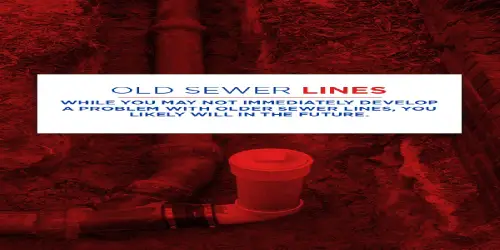
While you may not immediately develop a problem with older sewer lines, you likely will in the future. Plumbers typically used either cast-iron or clay pipes decades ago. Both materials are more brittle than the modern plastic piping available. Tree roots can quickly infiltrate these types of pipe material, and they are susceptible to cracking from shifting of the surrounding soil. If you still have old drain lines, consider having them replaced.
Yes, replacing your sewer drain with new piping material is a crucial decision. However, you will free yourself of the worry of one day waking up to a broken sewer line in your yard. Thanks to our trenchless pipe replacement system, you will experience less disruption to your lifestyle and yard. Consider investing in replacing your sewer line today to prevent severe backup problems in the future.
Properly Dispose of Waste
To avoid clogs from solid items going down the drain, know what you can and cannot pour down drains or flush in toilets. You will be able to both prevent local clogs in your pipes, as well as backups for your whole home.
For drains, never pour grease down the drain. While warm, grease or oil flows smoothly as a liquid. As it cools, however, it solidifies, into a drain-clogging mass. If this clog happens in the main sewer line, you could experience a backup. Check with your local waste authority for the proper procedure for throwing away used household grease or oil.
Remember, your toilet is not a trash can. Do not flush anything other than toilet tissue and human waste. Paper towels, feminine products, diapers and baby wipes all can readily clog a toilet or sewer line. Even products labeled flushable, such as wet toilet cloths, can create problems in your drainage system. Keep a trash can in your bathroom for all these products to prevent clogs and worse.
Correct Drainage Problems
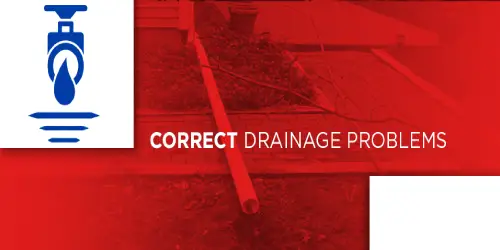
The next time you experience heavy rains, the systems you have in place for preventing basement flooding could inundate your drainage system and cause backups. The potential for flow reversals in your drains explains why flooding control systems should not drain to your sanitary line. If you have such a connection, your home is not up to inspection code. If you have illegally connected French drains or sump pump outlets, have one of our plumbers bring your system up to code.
Correcting drainage connection problems will help prevent basement flooding from rains, as well as reduce the likelihood of sewage backup into your home. Additionally, if you have any plans to sell your home in the future, repairing these problems now will take one more thing away that you would need to fix to bring your home up to code to sell it.
Prevent Tree Root Problems
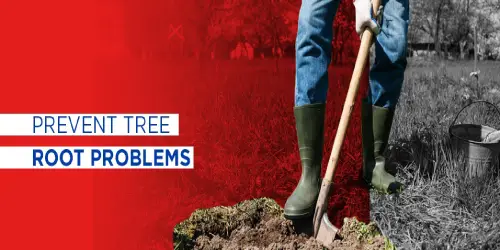
Tree roots growing through pipes can seriously undermine your drainage system. Due to the far-reaching nature of some trees' root systems, however, you may not be able to solve the problem merely by not planting trees near your sewer line. There are a few ways to reduce the chances of roots breaking your sewer lines.
If you have older lines made of clay or cast iron, replacing them with plastic can prevent serious tree root problems. The smooth plastic of newer piping allows tree roots to grow around it, rather than through it. If you do not feel prepared to replace older sewer lines yet, consult with a tree professional about cutting roots growing near your sewer line. Do not attempt this task yourself, because finding where the roots are and cutting them in such a way that it does not harm the tree are difficult tasks for those who are not experts.
Contact Mr. Rooter of Greater Syracuse for Sewer Solutions
Sewer problems can ruin your day. If you need emergency repairs to your sewer line or for any other plumbing problems, contact Mr. Rooter of Greater Syracuse. We have licensed plumbers who can come to your home to evaluate your problem and repair your sewer lines.
Sewer backup cleaning often needs unique equipment homeowners don't have. Our plumbers have the equipment and experience they need to solve your home plumbing problems. Because we know plumbing problems often occur at the least convenient times, we offer 24-hour emergency service. Call us at Mr. Rooter Plumbing seven days a week, at any time of the day or night, to get a plumber out to your home to repair your sewer problem. If you don't have an emergency, but need help with sewer backup prevention or another plumbing maintenance service, use our online contact form to reach us.
